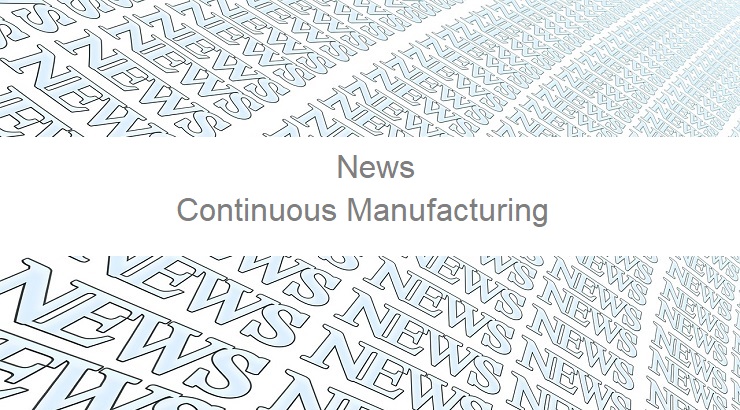Pharmaceutical manufacturers face challenges ranging from emerging drug needs to tighter regulatory controls. Here, Emily Newton looks at how many company leaders are embracing trends that could forever change pharmaceutical production.Embracing technology to overcome increasingly complex day to day activities within the pharma industry could lead to higher production output, better quality, and increased competitiveness.
Artificial Intelligence
The pharmaceutical sector was not among the earliest adopters of artificial intelligence (AI). However, the technology’s diversity makes it well-suited to various needs that pharmaceutical representatives face.
For example, a marketing professional could use AI to predict a patient’s journey and learn which marketing efforts or media outlets would most effectively convince them to learn more about a medication or ask their doctor to prescribe it for them.
AI can also prevent disruptions in pharmaceutical manufacturing plants. One common approach is to use predictive maintenance tools. They feature algorithms that assess a machine’s likelihood of failure. Then, the responsible parties get alerts to schedule servicing or take other relevant actions before a breakdown occurs.
One AI-based solution in development centres on enhancing risk management methods. Trained algorithms will spot abnormal aspects of processes or products and alert the appropriate parties. That proactive approach will prevent wasting supplies or production time on products that wouldn’t pass quality control checks.
Using AI in pharmaceutical production is not yet a widespread practice. However, as more company leaders invest in it and achieve desirable results, that should change.
Robots
The industrial manufacturing sector has started using robots more often. Pharmaceutical plants are no exception. Robots can raise factory productivity, reduce error rates, and cut rates of fatigue-related injuries. Robotic improvements also relieve humans from time-consuming or monotonous tasks, giving them more time to engage in more rewarding responsibilities.
In one example, a partnership between Clemson University and Nephron Pharmaceuticals Corporation resulted in a syringe-filling robot that could tackle drug shortages. Syringe-filling is a specialised process normally completed by technicians standing in clean rooms under laminar airflow hoods. When they don’t use robots, up to five employees per day for each hood help meet prefilled syringe demand. However, these advanced machines fill, cap, and seal syringes without human intervention.
Another case involved developing a custom-built robot to coat plastic syringes with a substance that gives them glass-like properties. Since glass costs more than plastic for syringe production, this automated method cuts costs. These robots also coat 38 parts per minute, making them highly efficient.
Robots could play a crucial role once products leave factories, too. French pharmaceutical brand Sanofi developed a robotic booth that can vaccinate people against COVID-19 and other ailments. The company currently uses it to administer influenza vaccines in China and plans to depend on it for mass vaccination against the novel coronavirus, pending government approval.
The Internet of Things
The Internet of Things (IoT) concerns the vast and ever-growing assortment of connected devices. The rise in IoT innovations enables people to do various tasks differently and provides them with better visibility throughout a process.
From a pharmaceutical manufacturing perspective, that increased transparency can keep operations on track and reduce complications. The IoT can also complement other processing improvements.
For example, many chemical processing technicians employed by pharmaceutical companies now use continuous flow processing rather than batch processing. That approach involves producing chemical reactions in tubes or pipes. It typically requires only 10% to 20% of a batch processing setup’s footprint. Some IoT apps that work in the cloud let chemists remotely monitor their chemical reactions and the pH of reaction mixes or samples.
IoT sensors can also help pharmaceutical representatives verify that they follow the correct processes to meet regulatory requirements. Similarly, if a product recall occurs, IoT sensors can confirm where things went wrong and give people the insights they need to make quick corrections.
Another use of IoT in the pharmaceutical world concerns digital twins. Those are virtual representations of pieces of equipment, sections of factories, or current processes. Some company leaders developed digital twins that connect to IoT sensors. Those give thorough perspectives into operations and show where things are working well or need improvement.
Data Analytics and Modelling
Companies from numerous sectors use business intelligence software to guide decision-making and track trends. The pharmaceutical industry has followed suit. Leaders want to know how to strengthen their supply chains and make better operational choices. Data allows people to look at evidence rather than relying primarily on instinct.
Historical data also proves valuable for predicting future supply chain disruptions and facilitating better preparedness. One study found that medical tech companies could lose 38% of each year’s earnings due to supply chain shocks compounding over a decade. However, if company executives use data to pinpoint the most likely sources of problems, safeguarding against catastrophic outcomes becomes more straightforward.
Data analytics could also empower more strategic usage of IoT solutions. For example, many pharmaceutical companies rely on connected sensors for improved cold-chain monitoring.
That’s no surprise, considering the more than $35 billion lost annually due to cold-chain failures. A pharmaceutical representative might analyse all such events over a given period. They could then look for trends that identify possible shortcomings.
Moreover, if company executives consider expanding into a new market, data analytics tools can remove much of the associated guesswork and uncertainty. There’s no way to predict future events with certainty, but data analytics products allow more confident assumptions.
Pharmaceutical Manufacturing Will Keep Evolving
Implementing new technologies is often crucial for helping pharmaceutical companies stay competitive. The trends mentioned above are not automatically successful solutions for all issues, but they’re well worth considering when companies must continue meeting demands.
Author: Emily Newton is the Editor-In-Chief of Revolutionized, a magazine exploring innovations in science and industry that shares ideas to promote a better tomorrow
Link zum Originalbeitrag

